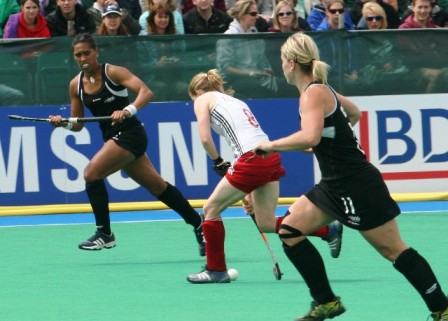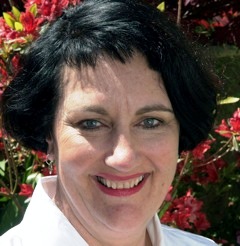
On the ball: picking up the concept of mentoring and running with it
Getting women into governance
The recent furore over systemic sexism at Sky Sports suggests that women are not treated equally in British sport. Robyn Cockburn reports on a New Zealand project that is doing something to redress global inequalities.

On the ball: picking up the concept of mentoring and running with it
In 1994 the Brighton Declaration on Women in Sport called on governments, public authorities, businesses and educational establishments to “develop a sporting culture that enables and values the full involvement of women in every aspect of sport”. It focused on how to accelerate change to redress the imbalances women face in their participation and involvement in sport [note i]. In a similar vein the International Olympic Committee (IOC) has committed the Olympic movement to gender equity “by encouraging women to have roles at all levels and in all structures, especially in the executive bodies of national sports-oriented organisations” [note ii]. They believe that unless women get into leadership positions at a national level, there is little chance that they will contribute at an international level. The IOC have set a target of 20% of decision-making positions in national and international sports organisations being held by women.
It was against this international backdrop that the New Zealand Olympic Committee (NZOC), through its Women in Sport Working Group (WIS), undertook research to quantify the extent to which there is gender balance in leadership and decision-making positions in New Zealand sport. The answer was that there isn’t. The research found that 27% of national board members were women, and there were 10 boards (22%) with no women on them at all. Only 10 women in total were on international boards. The barriers preventing women from participating in senior roles were identified as a lack of women mentors (57%), women taking career breaks for domestic reasons (49%), a lack of women role models/peers (34%), a lack of confidence in their own ability (34%), the lack of childcare (30%) and an unconscious discrimination from both males and females (23%).
As one of the enablers identified was mentoring for women in sports, the WIS reviewed the features of a well-functioning mentoring programme for women – in sport, in business and in governance – and found that mentoring programmes that worked involved: peer mentoring and alternative models; chemistry in the mentor/mentee relationship; role modelling where the mentor models skills and approaches within the mentoring relationship with a particular focus on identified ’skill gaps’; flexibility in terms of the formality of the relationship; relationships that assist women to develop networks; increased exposure and visibility for both mentors and mentees which legitimates the programme; challenging assignments suggested by the mentor that directly impact on career development; and a mentoring process that is facilitative and nurturing. To quote John Sweeney, writing in 2004: “Mentoring is a partnership between two people built on trust. It is a process in which the mentor offers ongoing support and development opportunities to the mentee. Addressing issues and blockages identified by the mentee, the mentor offers guidance, counselling and support in the form of pragmatic and objective assistance. Both share a common purpose of developing a strong two-way learning relationship.” [note iii]
With the findings of the review available, the WIS put together a pilot mentoring programme that has been operating over the past 12 months in New Zealand. For the programme to be successful there needed to be good stakeholder engagement – not only the mentors and mentees themselves but also, importantly, the organisations supporting the programme, the NZOC and national sports organisations. For it to be fully effective there needed to be a comprehensive understanding of the programme’s goals and a commitment to them at all levels, adequate resources in terms of personnel, funding and administrative support, and effective processes to develop and maintain the programme. The challenge was to ensure that the mentoring programme would fit the organisational and environmental context and would challenge the status quo and specifically address the issue of lack of women in leadership roles.
A range of mentoring models have been used in the pilot programme, reflecting the differing mentee needs and mentor availability. These included providing opportunities for peer mentoring in groups, mentoring using a combination of face-to-face and electronic communication [note iv] – phone, social networking sites and Skype – using more than one mentor per mentee.
Mentees and indeed mentors were recruited using specific criteria developed by the programme managers and given as induction into the programme and its purpose. Taking part in the induction process was held to be an imperative. In recruiting mentors the programme sought expertise in providing information and guidance and in using a high level of listening skills and questioning skills to gain understanding; also an ability to network and broker access to opportunities, including access to key people and the skills needed to make explicit links between the theoretical side of management and governance principles and the practicalities of the mentee’s work [note v] . Experienced governors were identified as potential mentors and invited to take part. Those who were interested completed a brief application form that enabled ’matching’ to take place. Mentees were recruited through National Sports Organisation (NSO) promotion, the use of women in sport databases and general promotion through the New Zealand Olympic Committee. Applicants were selected on the basis of their interest and preparedness to participate, and their aspirations for being a sport governor.
Once individual mentors and mentees were selected, a process of matching occurred. The mentor’s experience in the chosen field and connectedness were reviewed and the best match made with potential mentees. The wider aspirations of the mentee were taken into account as well as their current skill, knowledge and experience profile and their existing sporting experience. Some wanted to develop networks in other geographic locations and others were keen to have a male mentor. Geographic location was only partially a criteria in the selection process, as there was interest in using a range of models as part of the pilot programme. Once the pairs were selected, both the mentor and then mentee were invited to endorse the selection or reject if the match wasn’t suitable.
Most mentoring pairs then had a facilitated first meeting with the programme director being present in person or as part of a three-way teleconference. This confirmed goals and objectives, indicators of success, preferred modes of mentoring and the contributions and expectations of the mentor. The results of these discussions were documented in mentoring agreements.
Ongoing support to both mentor and mentee was also held to be important. A comprehensive suite of resources were developed that provided a framework for the mentoring relationship, some structured activities, meeting summaries and additional links for further support. These were published in hard copy for both mentors and mentees and available online for download and use.
In addition there was regular contact between the programme director, mentors and mentees to monitor progress, trouble-shoot and provide support and guidance. While there was always the option that the mentoring relationship could be terminated on a ‘no fault’ basis, this has not occurred during the pilot.
Starting the mentoring process was a staggered process because of the complexity of setting up each of the relationships. Some pairs have been working together for more than six months and others are still in the earlier stages of the relationship. Self-review and monitoring has already identified the value of the programme in terms of readiness for national and regional sport governance roles, and several of the participants have already received their first board appointment.
A comprehensive and independent evaluation of the pilot programme is underway that will help to shape the next phase of its delivery but in the mean time one quote from a mentee shows how well the programme has been received: “I have achieved my goal earlier than I thought. In July I approached a sport and asked them if I could sit in on their board meetings. After the last meeting the chairman asked if I wanted to be co-opted onto the board. He had talked to all the board members and after they had seen my CV were very happy for this to happen. Before making the decision I composed a list of questions with the support from my mentor and met with the chairman to have further conversations. So my induction is going to begin with the CEO and a member of the board, and my co-opt term will run from Dec 2010. Then there is an opportunity to extend the term if all are happy or for me to think about an elected or appointed role.”
Robyn Cockburn is a director of Lumin Limited www.lumin.co.nz and programme director for the pilot mentoring programme.
Notes:
i Hillary Commission, 1994, Winning Women Charter.
ii New Zealand Olympic Committee, 2007 Gender Equity Programme, www.nzoc.org.nz
iiiJohn Sweeney quoted in Everyone Needs a Mentor Clutterbuck, David. (2004)., Google Books (http://books.google.co.nz/books)
iv Buche, M., Development of Trust in Electronic Mentoring relationships, International Journal of Networking and Virtual Organisations 2008 - Vol. 5, No.1 pp. 35 - 50
v Mentoring and Coaching CPD Capacity Building Project, Centre for the Use of Research and Evidence in Education, (2005), UK
The Leisure Review, March 2011
© Copyright of all material on this site is retained by The Leisure Review or the individual contributors where stated. Contact The Leisure Review for details.
Download a pdf version of this article for printing

Robyn Cockburn
